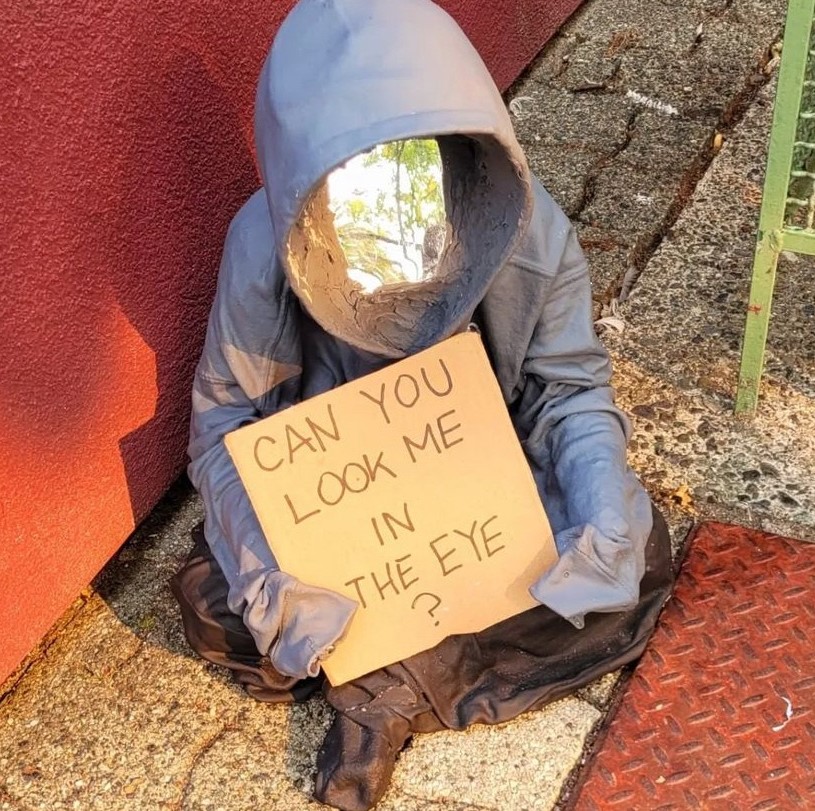Vancouver street artist Lupo honours victims of overdose, suicide, and state violence

Posted September 20, 2024 7:51 pm.
Last Updated September 20, 2024 7:52 pm.
Those travelling through Vancouver on their daily treks may have spotted hooded, ghostly sculptures in surprising places over the last three years. They are forlorn and faceless, easily mistaken for a child.
They’re the work of a multimedia street artist called Lupo, who chooses to cover his face partly because of the illegal, activist nature of his work and a personal history of being criminalized.
Two of his sculptures are on the roof of the City Centre Artists’ Lodge on Main Street in the Mount Pleasant neighbourhood.
“So, this is an example of what people might find,” said Lupo, speaking with CityNews outside the motel. He gestures to a figure seated on the roof, resembling a pre-teen wearing a hoodie.
“I make them usually in memory of often a specific person, but I always hope that other people will put their own meaning, tell their own story on it.”
Lupo’s work will be showcased at the Vancouver Outsider Arts Festival this October. He says his collection of life-sized sculptures perched on an urban canvas is, in a way, a community memorial.
“The community has called it ‘belovedghosts.’ It started because I was losing a lot of people — a lot of people in my life who were dying as a direct result of systemic oppression. Some of that was physical violence, some of that was suicide, some of that was overdose. But it’s all connected to oppression,” said Lupo.
Some of his sculptures are found at the ground level — like this one on Granville Island — daring passers-by to look down and see their expressions reflected back.

In this present political moment in British Columbia, where two of the parties up for election are interested in forcing people with substance use disorders into treatment, Lupo suggests their reasoning of public safety obscures what is really a squeamishness of poverty.
“There’s a big difference between being unsafe and just feeling uncomfortable looking at poor folks. I cannot describe to somebody who hasn’t experienced it — if anybody out there has or hasn’t — I cannot describe what it’s like for your existence to be considered a public threat,” he said.
Halfway down a motel stairwell to the basement, framed by colourful murals, stands a sculpture with a more reassuring tone, a departure from the calcified figures of despair and isolation that characterize many of Lupo’s works.
It’s an effigy of two young people donning hoodies, embracing each other in the shelter of the stairwell.
“Well, I was thinking a lot the way that our loved ones who have passed on are still always with us right? One person dead, one person living, but they never really leave us. Just thinking about all the isolation that a lot of us are in right now, even being surrounded by people and feeling completely alone in the world. I just wanted to make some pieces like this that had more of that feeling of connection, of love, and embracing, and trying to put that out there.”
Lupo’s work can also be seen at a solo exhibition at the City Centre Artists’ Lodge Nov. 7-9.








